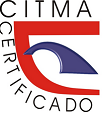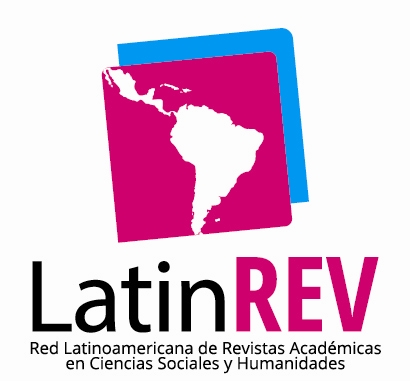Form for the evaluation of review articles
Before starting the process, the reviewer must realize that he will do it blind.
TITLE*
It contains the main idea or theme that is addressed (research object).
It reflects the main solution of the investigated problem.
Encourage the reader to know what is stated in the summary.
Express essential information.
It is made up of a maximum of 15 words.
If it contains any acronym (exceptionally), it is the domain of the national and international scientific community.
Avoid using nonspecific phrases such as: A study of ..., An investigation of ...., A review of ...., Comments on ..., Notes on ...., Observations on ....
It is made up of one or more noun phrases (it lacks conjugated verb forms).
Avoid the conclusive style.
ABSTRACT*
Written in a single block of text.
It offers a “brief” summary of each of the main parts of the scientific article: Introduction or rationale, Objective, Materials and methods, Results (the main ones) and Conclusion (the main ones).
Written in the past and impersonally.
It has a maximum length of 250 words.
The keywords proposed by the author obey the theme being addressed and there are a maximum of eight.
If it contains any acronym (exceptionally), it is the domain of the national and international scientific community.
Tables, graphs, figures and bibliographic citations are excluded.
It is closely related to the title.
It is confirmed that all the information provided here originates from the body of the article.
INTRODUCTION*
Written in the present and impersonal tense.
An expository, descriptive and / or narrative style is used
It expresses the antecedents that support the problem (state of the art)
Chronological sequence in the expression of the state of the art.
Describe the what and why of the investigation. (Problematic situation)
Adequately recognize the copyright of other colleagues by referencing them whenever you use information, concepts etc. given by these.
Encourage readers toward developmental reading.
Conclude with the purpose of the review.
Mention the methods used in the selection and collection of information, materials, etc.
Establece criterios para decidir los artículos que se van a incluir o no en la revisión
DEVELOPING*
It establishes criteria to decide the articles to be included or not in the review.
Studies that have a particular application should be described in detail, but those whose results are equivalent can be grouped together and briefly summarized.
The systematization of bibliographic references or of any communicative support always gives rise to criticisms, reflections, reaffirmation of the criteria of the authors of the article, in a suitable order, so that the reader becomes aware of the evolution of the subject being addressed.
Use of a scientific vocabulary and style appropriate to the communication of educational sciences
The acronyms or abbreviations presented are clarified the first time they are used and are used three or more times in the body of the work.
A deep scientific analysis is carried out that reveals contributions to the study of educational sciences.
CONCLUSIONS*
There is consistency between the conclusions of the review and the results of the analysis.
They reflect the author's positions in relation to the subject of the review, based on the systematization achieved in the development, and the coincidences, discrepancies and criticisms recorded in it.
BIBLIOGRAPHIC REFERENCES*
They obey the ISO 690 bibliographic standard in author-date.
There are as many as those raised in the body of work.
They have a DOI or URL that enables you as a reviewer to verify the content cited above.
70% of the total is updated (last 5 years, counting the current one, for books, journals must be from the last 3 years)
There are a minimum of 25 and a maximum of 40.
There are as many as are necessary to address the essential arguments by the authors, both in the introduction and in the discussion of the results.
ADDITIONAL CONSIDERATIONS*
Before starting the process, the reviewer must realize that he will do it blind.
TITLE*
It contains the main idea or theme that is addressed (research object).
It reflects the main solution of the investigated problem.
Encourage the reader to know what is stated in the summary.
Express essential information.
It is made up of a maximum of 15 words.
If it contains any acronym (exceptionally), it is the domain of the national and international scientific community.
Avoid using nonspecific phrases such as: A study of ..., An investigation of ...., A review of ...., Comments on ..., Notes on ...., Observations on ....
It is made up of one or more noun phrases (it lacks conjugated verb forms).
Avoid the conclusive style.
ABSTRACT*
Written in a single block of text.
It offers a “brief” summary of each of the main parts of the scientific article: Introduction or rationale, Objective, Materials and methods, Results (the main ones) and Conclusion (the main ones).
Written in the past and impersonally.
It has a maximum length of 250 words.
The keywords proposed by the author obey the theme being addressed and there are a maximum of eight.
If it contains any acronym (exceptionally), it is the domain of the national and international scientific community.
Tables, graphs, figures and bibliographic citations are excluded.
It is closely related to the title.
It is confirmed that all the information provided here originates from the body of the article.
INTRODUCTION*
Written in the present and impersonal tense.
An expository, descriptive and / or narrative style is used
It expresses the antecedents that support the problem (state of the art)
Chronological sequence in the expression of the state of the art.
Describe the what and why of the investigation. (Problematic situation)
Adequately recognize the copyright of other colleagues by referencing them whenever you use information, concepts etc. given by these.
Encourage readers toward developmental reading.
Conclude with the purpose of the review.
Mention the methods used in the selection and collection of information, materials, etc.
Establece criterios para decidir los artículos que se van a incluir o no en la revisión
DEVELOPING*
It establishes criteria to decide the articles to be included or not in the review.
Studies that have a particular application should be described in detail, but those whose results are equivalent can be grouped together and briefly summarized.
The systematization of bibliographic references or of any communicative support always gives rise to criticisms, reflections, reaffirmation of the criteria of the authors of the article, in a suitable order, so that the reader becomes aware of the evolution of the subject being addressed.
Use of a scientific vocabulary and style appropriate to the communication of educational sciences
The acronyms or abbreviations presented are clarified the first time they are used and are used three or more times in the body of the work.
A deep scientific analysis is carried out that reveals contributions to the study of educational sciences.
CONCLUSIONS*
There is consistency between the conclusions of the review and the results of the analysis.
They reflect the author's positions in relation to the subject of the review, based on the systematization achieved in the development, and the coincidences, discrepancies and criticisms recorded in it.
BIBLIOGRAPHIC REFERENCES*
They obey the APA bibliographic standard in its version VII.
There are as many as those raised in the body of work.
They have a DOI or URL that enables you as a reviewer to verify the content cited above.
70% of the total is updated (last 5 years, counting the current one, for books, journals must be from the last 3 years)
There are a minimum of 25 and a maximum of 40.
There are as many as are necessary to address the essential arguments by the authors, both in the introduction and in the discussion of the results.
ADDITIONAL CONSIDERATIONS*
Language








